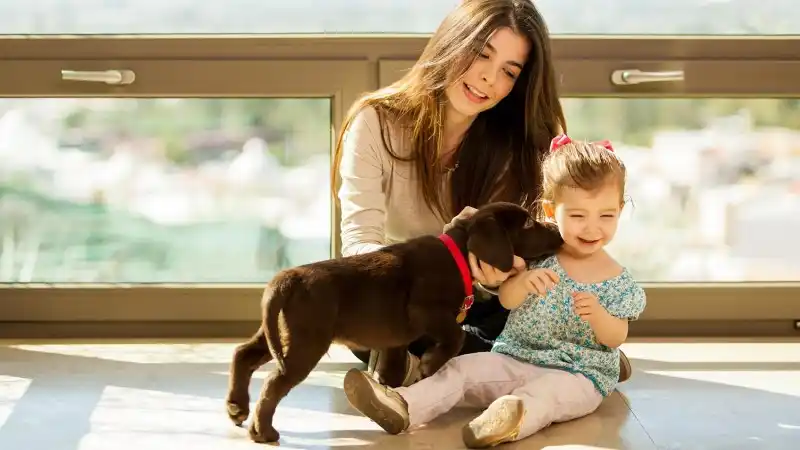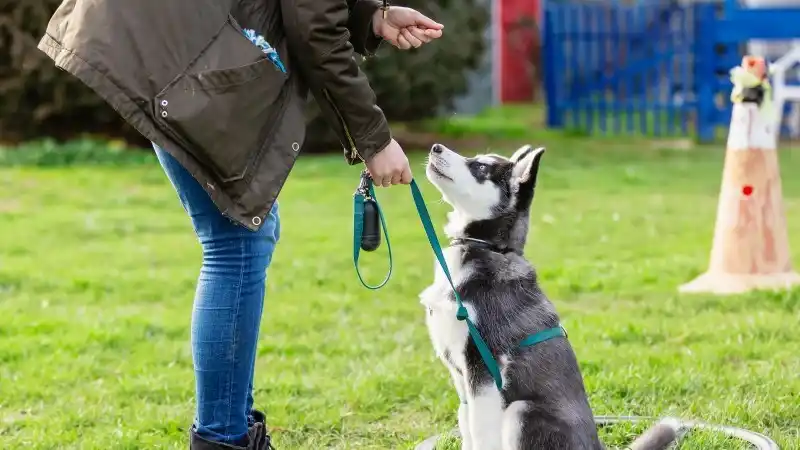Canine Door Etiquette
Is your canine under control when you enter and exit doors together? Or does your dog plow through doors ahead of you and drag you behind his leash?
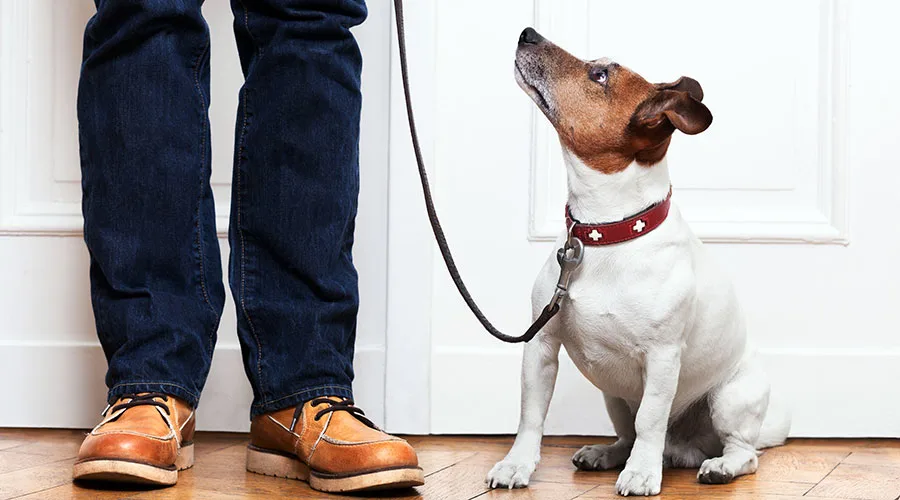
Is your canine under control when you enter and exit doors together? Or does your dog plow through doors ahead of you and drag you behind his leash? Door etiquette is very important to ensure the safety of your dog, you and any other humans who may get knocked down by an exuberant pup. Dogs of any age can learn door manners – it’s never too late!
Determine your rules.
Your standards to allow your dog to go through a doorway may vary for different doors. Be consistent with your criteria.
Building doors:
Here are some examples of criteria you may choose to have before the dog goes through the door. Choose one that fits your lifestyle.
Have the dog _offer_a sit before going through a door. This means the dog sits without being told the verbal command “sit.” Patiently wait for your dog to sit, praise your dog, release your dog (“ok”) and then proceed. Your dog never goes through a door unless he offers a sit first; this takes patience but the pay-off is worth it! Your dog will be focused on you and calm.
Tell your dog “sit” before going through a door. Wait for your dog to sit, praise your dog, release your dog (“ok”) and then proceed through the door together.
Have your dog pause in a stand position before he is allowed to go through a door. Open the door and then say your release word (“ok”) when your dog is allowed to go through the door. Your dog will learn that the door only stays open when he is calmly standing next to you. No verbal command is required until you say the release word. If he tries to go through the door without your release word, gently close the door without squishing your dog in the door.
Below are examples of standards that you may choose to have after your dog goes through a door:
Wait for your dog to head check (turn his head around and look at your upper body) after going through a door before you continue walking. This may help ensure that your dog is focused on you instead of looking at all the interesting things that are outside or inside.
Train your dog to go through a door and then immediately turn around and sit (facing you). Use a treat and lure your dog through the door, into a u-turn, and then into a sit. Say “yes” and treat your dog in the sit. (Over time, fade the treats.) When you’re ready to move on, release your dog (“ok”) and then continue. This is a nice way to ensure your dog does not engage with any other dogs (or people) that may be on the other side of the door. This is helpful if you need to stop to lock a door. Or perhaps you like this behavior so your dog enters your home, turns and sits politely while you unleash him. If you choose to not use this with every door, give a verbal “turn” command before going through a door that requires this behavior. The verbal command will let your dog know when this is required.
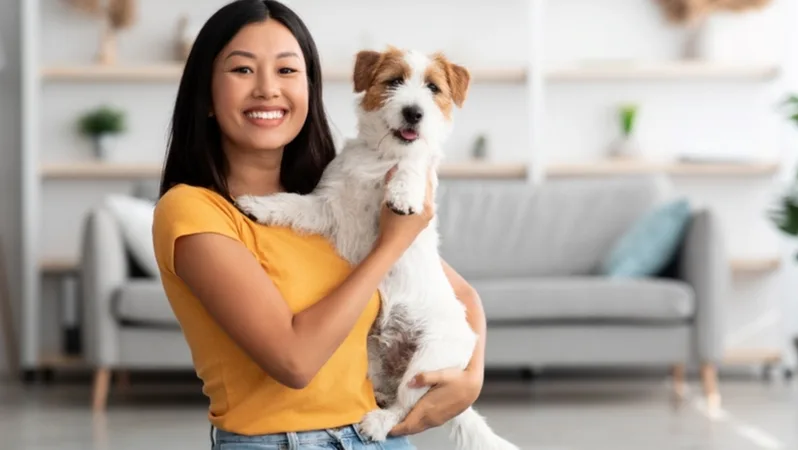
Every Dog and Cat Deserves the Pet Insurance of Champions
Get prize-winning care for your pets.
Car doors:
A popular vehicle protocol is having your dog refrain from exiting the car (even if a door is open) until you to say a release word (“ok”). This will give you time to leash up your dog and have things under control before your dog jumps out.
To start, have your dog in the car. Open the car door an inch. If your dog starts to attempt to plunge out of the car, do not open the door any further. If you can reclose the door without hurting your dog, close the door. Repeat this several times until your dog realizes that you never open the car door past an inch until he is calm and not trying to leap out of the vehicle. Then work up to having the car door open a few inches, a foot and then all the way. Use verbal praise (“good dog”) when your dog is calm. The dog is rewarded for his calm behavior by having the door opened wider each time and then eventually his relaxed behavior will be rewarded by being allowed to exit the car when you say the release word (“ok”).
After the dog exits the car and has all four feet on the ground, you may choose to require your dog to offer a head check. When your dog head checks toward you, you say “yes” and then continue to wherever you were going. You may have to wait several seconds for your (leashed) dog to head check after he exits the car; eventually your dog will learn that that behavior is required before any more fun happens!
Use treats to reward good behavior.
Treat your dog when he offers you a sit, he is patiently waiting for you to give the command to go through the door, or he head checks to you after going through a door (or out of the car). Dogs repeat behaviors that are reinforced! Make the treats random – treats don’t happen every time, but sometimes.
Immediately re-do any doorway behavior that was not up to par.
If your dog manages to bust through a door without meeting your criteria, do not wait until next time to work on this behavior. Your dog learns from you 24-7 so you need to show him right away that the rules have not changed. Instantly have your dog re-do the doorway. This means put your dog back into the car and wait for him to be calm, give him his release word, and then allow him to get out of the vehicle. For building doorways, this means go all the way back in (or out) and redo the entry correctly.
Happy training!

Every Dog and Cat Deserves the Pet Insurance of Champions
Get prize-winning care for your pets.
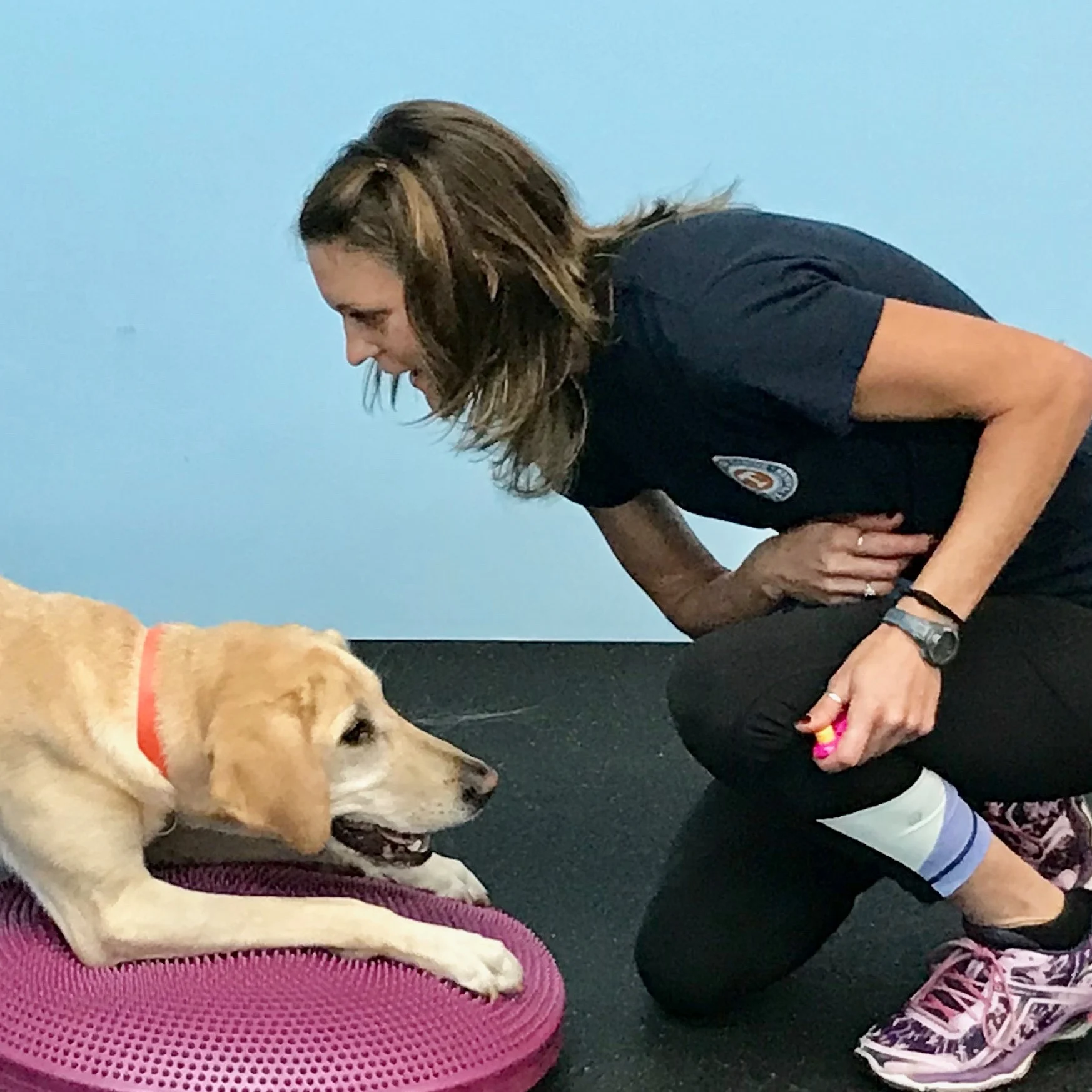
Jasey Day holds the Certified Canine Fitness Trainer (CCFT) credential through the University of Tennessee. She is a member of the Bobbie Lyons K9FITteam - a team of compassionate canine fitness instructors who actively teach others and continually expand their own knowledge. Since 2004, Jasey has taught a variety of workshops and classes on the following: Puppy, Canine Good Citizen/Family Pet, Advanced Family Pet, Canine Fitness, Canine Swimming, Rally, and Agility. In addition, Jasey has earned over 60 titles in Dock Diving, Agility, Rally, CGC and Trick Dog. Jasey has worked full time for the American Kennel Club since 2007 and teaches at Care First Animal Hospital in Raleigh, NC. Jasey’s Labrador Retrievers spend their free time hiking, training, and snuggling with Jasey.
READ MORE ARTICLES
